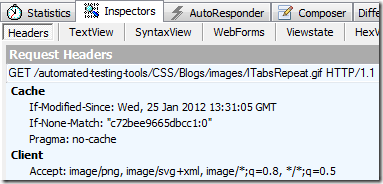How are "304 Not Modified" responses generated?
How does a browser determine whether the response to an HTTP request is 304?
Is it set by the browser or sent from the server?
If sent by the server, how does the server know the data available in cache, also how does it set 304 to an image?
My guess, if it's generated by the browser:
function is_modified()
{
return get_data_from_cache() === get_data_from_url();
}
function get_data_from_cache()
{
return some_hash_or_xxx_function(cache_data);
}
function get_data_from_url()
{
return some_hash_or_xxx_function(new_data);
}
function some_hash_or_xxx_function(data)
{
// Do something with the data.
// What is that algorithm?
return result;
}
console.log(is_modified());
I am relying on a third party API provider to get data, parse & push it to my database. The data may or may not change during every request, but the header always sends 200. I do not want to parse, check the last Unique ID in DB and so on... to determine the change in data, nor compare the result directly rather I md5(), sha1() and crc32() hashed the result and works fine, but I'm wondering about the algorithm to determine 304.
I want to use the same kind of algorithm to determine the change in my data.

